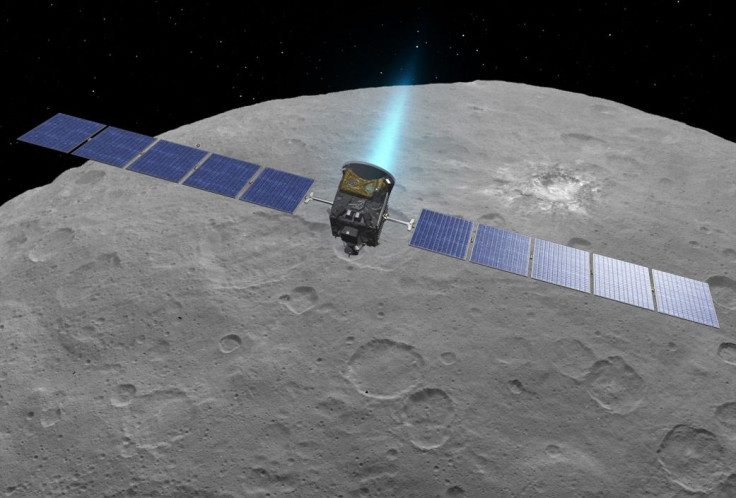Large Craters Missing On Ceres; Is Dwarf Planet’s Internal Evolution To Blame?

Scientists believe that Ceres, the largest object in the Main Asteroid Belt between Mars and Jupiter, must have been hit by numerous large asteroids during its lifetime spanning 4.5 billion years, and those impacts should have created large craters on its surface. But such characteristics are missing on the dwarf planet, which is covered in countless small craters — something that researchers consider “a huge mystery.”
In an effort to find an answer, astronomers have conducted a new study using data from NASA's Dawn spacecraft, which has been orbiting Ceres since March 2015. The study, published in the journal Nature Communications on Wednesday, explores this puzzle of Ceres' missing large craters and attempts to find what has probably erased those traits.
“We concluded that a significant population of large craters on Ceres has been obliterated beyond recognition over geological time scales, which is likely the result of Ceres' peculiar composition and internal evolution,” lead investigator Simone Marchi, a senior research scientist at the Southwest Research Institute in Boulder, Colorado, said in a statement.
As part of the study, researchers modeled collisions of other bodies with Ceres since it formed, and predicted that the dwarf planet should have accumulated up to 10 to 15 craters larger than 400 km (250 miles) wide, and at least 40 craters larger than 100 km (62 miles) wide. Instead, Dawn found only 16 craters larger than 100 km, and none larger than 280 km (175 miles) in diameter.
The findings challenged most models of crater size and distribution, and are contrary to what is known from previously imaged asteroids. However, a closer look at Ceres’ topography revealed that up to three roughly circular, shallow basins — each of them being 800 km (500 miles) wide — are likely lying hidden below a surface subsequently marked with small craters.
“These depressions — or planitiae — may be ‘relict’ impact basins, left over from large collisions that took place early in Ceres’ history,” Marchi said. “It is as though Ceres cures its own large impact scars and regenerates new surfaces, over and over.”
According to the scientists, Ceres’ missing large craters may have been wiped out over time probably because a deep subsurface ice-rich layer — ice is less dense than rock — caused the topography to “relax,” or smooth out. However, the same process may not have operated as efficiently for the largest and deepest impact features.
“Our results indicate that a significant population of large craters has been obliterated, implying that long-wavelength topography viscously relaxed or that Ceres experienced protracted widespread resurfacing,” the researchers said in the study.
© Copyright IBTimes 2024. All rights reserved.





















